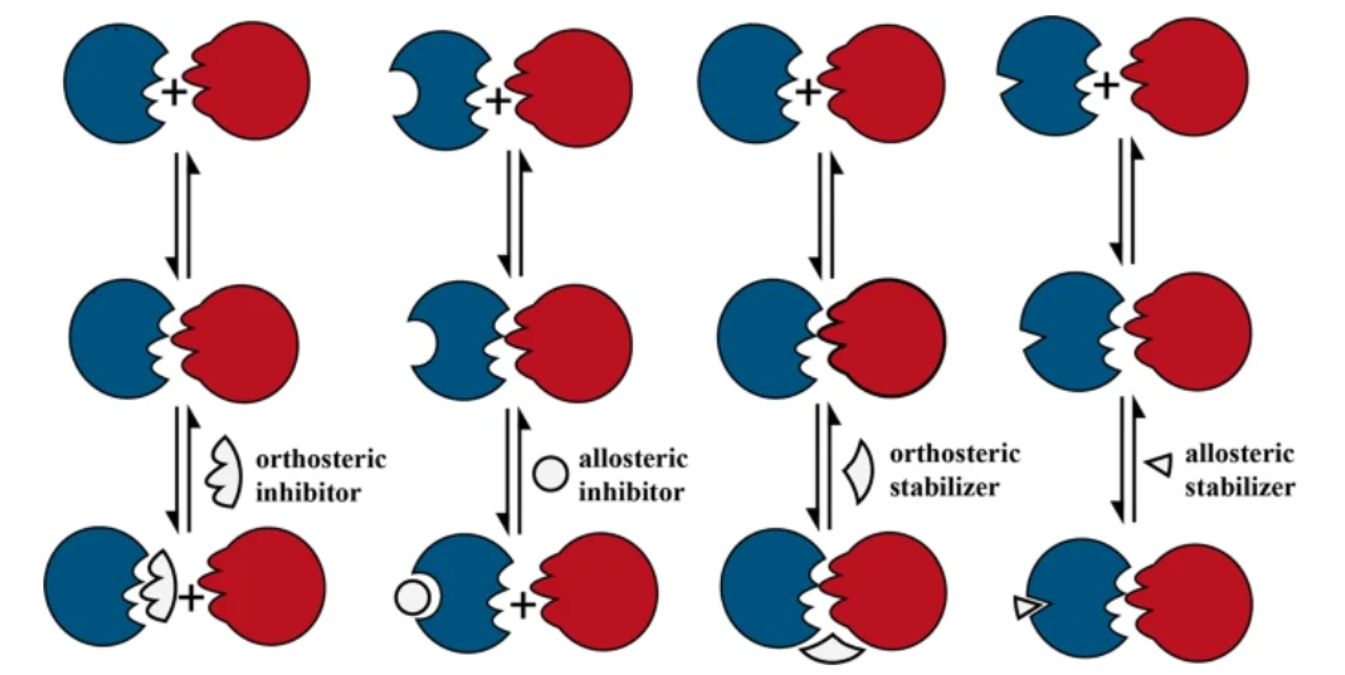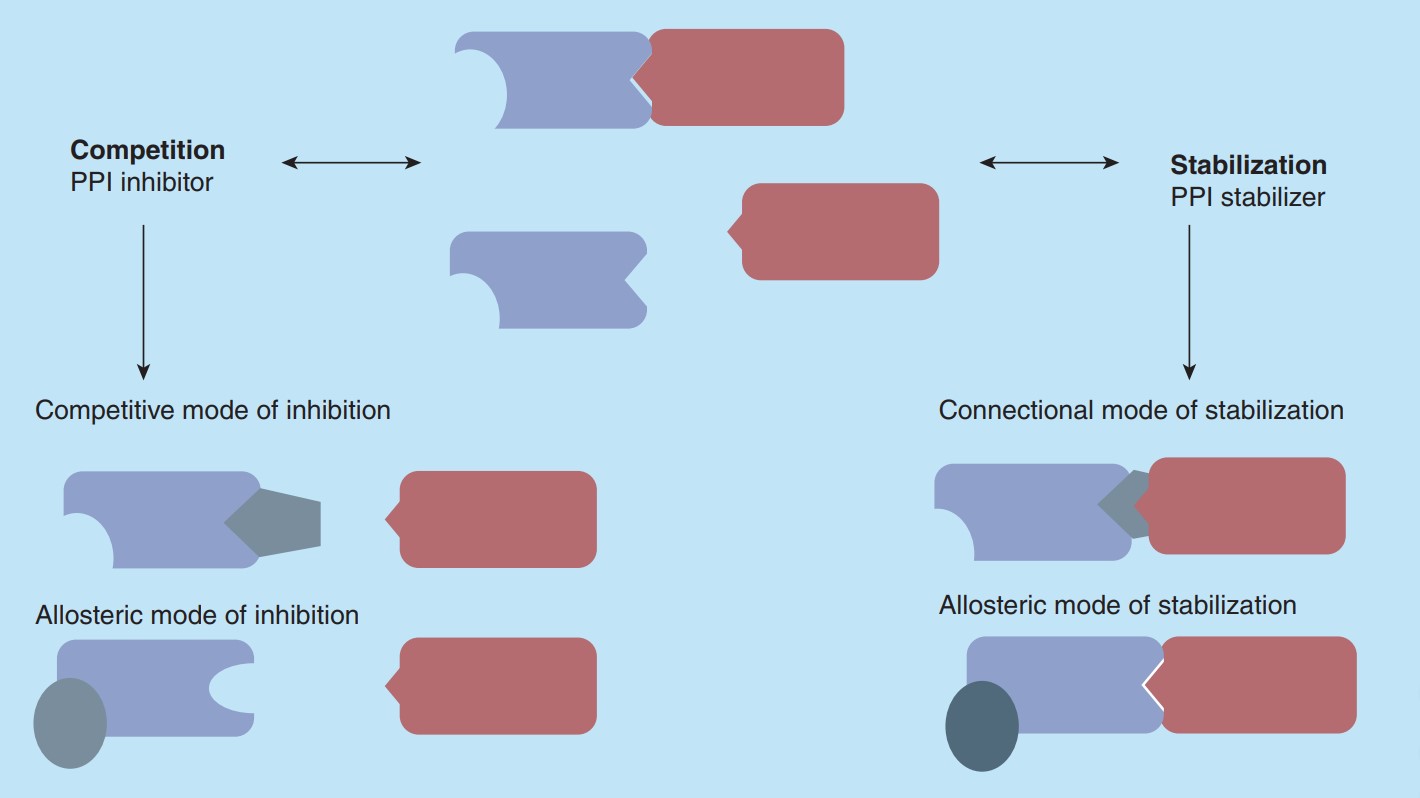Protein-protein interactions (PPIs) refer to the physical contacts established between two or more protein molecules as a result of biochemical events and/or electrostatic forces. These interactions are important for all biological processes, enabling proteins to form complexes, carry out their functions and regulate various cellular activities.

Types of Protein-Protein Interactions
Protein-protein interactions (PPIs) are essential for numerous biological processes. They can be categorized based on their duration, the nature of the interacting proteins, and the mechanism of interaction. Here, we explore three main types of Protein-protein interactions (PPIs): transient vs. permanent interactions, homotypic vs. heterotypic interactions, and direct vs. indirect interactions.
A. Transient Interaction vs. Permanent Interaction
Transient interactions are temporary and often reversible. They occur when proteins bind and dissociate quickly, usually in response to specific cellular signals or environmental conditions. These interactions are crucial for dynamic processes such as signal transduction, where proteins need to rapidly assemble and disassemble to transmit signals efficiently. Examples include enzyme-substrate interactions and receptor-ligand binding.
In contrast, permanent interactions are stable and long-lasting. Proteins involved in permanent interactions form complexes that persist for longer periods of time and help maintain the structural integrity and function of cellular components.
B. Homotypic Interaction vs. Heterotypic Interaction
Homotypic interactions occur between identical or similar proteins. These interactions involve the formation of higher order structures such as protein filaments and oligomers. The assembly of actin filaments in the cytoskeleton is driven by homotypic interactions between actin monomers.
Heterotypic interactions involve different proteins. In which different proteins interact to propagate a signal. For example, the interaction between a receptor and its downstream signaling protein, which triggers a series of cellular responses.
C. Direct Interaction vs. Indirect Interaction
Direct interactions involve physical contact between protein molecules, typically through specific binding sites. These interactions are often mediated by non-covalent forces such as hydrogen bonds, ionic interactions, and van der Waals forces. Direct interactions are fundamental to the formation of protein complexes and the execution of precise cellular functions.
Indirect interactions, however, occur when proteins interact through intermediary molecules or scaffolding proteins. These interactions facilitate the assembly of multi-protein complexes and the coordination of complex cellular processes. For example, scaffold proteins in signaling pathways bring together various signaling molecules, enabling efficient signal transduction.
Understanding the different types of protein-protein interactions is crucial for deciphering the complex networks that govern cellular functions and for developing targeted therapeutic strategies.

Methods for studying protein-protein interactions
Protein-protein interactions (PPIs) are of great significance in biological research. Understanding these interactions helps to reveal cellular functions and disease mechanisms. Methods for studying Protein-protein interactions (PPIs) can be divided into two main categories: experimental techniques and computational methods.
Experimental techniques
Yeast two-hybrid system The yeast two-hybrid system is a classic method for studying Protein-protein interactions (PPIs). By binding two proteins of interest to transcription factors in yeast cells separately and observing whether they can activate reporter genes, it is determined whether the two proteins interact with each other. This method is simple and efficient and suitable for large-scale screening.
Co-immunoprecipitation Co-immunoprecipitation uses specific antibodies to capture the target protein and its interacting partner proteins. By analyzing the precipitate, the proteins that interact with the target protein can be identified. This method has high specificity and sensitivity and is suitable for verifying known Protein-protein interactions (PPIs).
Fluorescence resonance energy transfer (FRET) FRET is a fluorescence-based technique used to detect interactions between proteins. When two fluorescently labeled proteins are brought into close proximity, energy is transferred from the donor fluorophore to the acceptor fluorophore, generating a fluorescent signal. FRET can monitor Protein-protein interactions (PPIs) in real time in living cells, providing dynamic information.
Surface Plasmon Resonance (SPR) SPR is a label-free technique that studies protein interactions by detecting changes in the angle of light reflection. SPR can provide kinetic parameters of the interaction, such as binding constants and dissociation constants, and is suitable for quantitative analysis of Protein-protein interactions (PPIs).
Computational methods
Molecular docking Molecular docking is a computational simulation technique used to predict protein-protein interactions. By calculating the interaction energy on the protein surface, possible binding sites and binding modes are determined. This method can provide theoretical guidance for experimental studies.
Protein-protein interaction databases PPI databases collect a large amount of known protein interaction information, such as BioGRID and STRING. These databases provide researchers with rich data resources to help them quickly find and analyze Protein-protein interactions (PPIs).
Application of machine learning and artificial intelligence in PPI prediction Machine learning and artificial intelligence technologies play an increasingly important role in PPI prediction. By training models, machine learning algorithms can identify potential Protein-protein interactions (PPIs) from large amounts of data and improve the accuracy and efficiency of predictions. These technologies provide powerful tools for large-scale PPI research.
Biological Significance of Protein-Protein Interactions
Role in Cell Function
Protein-protein interactions (PPIs) are fundamental to virtually every biological process. They facilitate the formation of protein complexes that are essential for cellular functions such as signal transduction, structural support, and enzymatic activity. For instance, in signal transduction pathways, proteins interact to relay signals from the cell surface to the nucleus, thereby influencing gene expression and cellular responses. Additionally, Protein-protein interactions (PPIs) are crucial in maintaining the structural integrity of cells by forming cytoskeletal networks. Enzymatic activities often require the formation of multi-protein complexes, where each protein component plays a specific role in catalyzing biochemical reactions.
Impact in Health and Disease
The disruption of normal protein-protein interactions can lead to various diseases, including cancer, neurodegenerative disorders, and infectious diseases. For example, in cancer, mutations may alter Protein-protein interactions (PPIs), leading to uncontrolled cell proliferation and tumor growth. In neurodegenerative diseases like Alzheimer’s, abnormal Protein-protein interactions (PPIs) result in the aggregation of misfolded proteins, which can damage neurons. Furthermore, pathogens often exploit host Protein-protein interactions (PPIs) to facilitate infection and replication. Understanding these interactions provides valuable insights into disease mechanisms and can aid in the development of therapeutic strategies. Targeting specific Protein-protein interactions (PPIs) with small molecules or biologics holds promise for treating diseases by restoring or inhibiting aberrant protein interactions.

